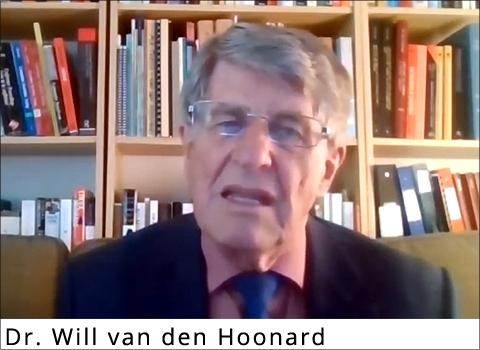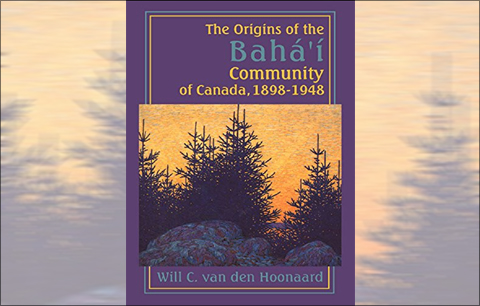|
 June
21, 2021
June
21, 2021
Bahá’ís in Canada: The First 50 Years
We are over 20
years into the
second century of the Canadian Bahá’í community. Only five years after
the name of Bahá’u’lláh was first publicly mentioned in the Americas at
the first interfaith congress – the World Parliament of Religions in
Chicago in 1893 – He had followers in Canada. A half-century later, a
handful of curious individuals had grown into a substantial presence on
the Canadian spiritual landscape, one that continues to grow and
contribute.

In the latest Big Ideas presentation, Will van den Hoonaard, professor emeritus
of Sociology at the University of New Brunswick, took us back in time.
Among his 14 major publications, he literally wrote the book on Bahá’í
history in this country, Origins of the Canadian Bahá’í
Community 1898-1948.
Over 100 online guests first learned of the small group – “individuals,
really,” with little sense of what it meant to be a community – that
had encountered the Bahá’í Faith in wonderfully quirky ways in the
years before Bahá’u’lláh’s son and successor, ‘Abdu’l-Bahá, known as
the Master, made his epic journey to North America.
“It is no surprise that chaos attended that phase of Bahá’í history,”
noted van den Hoonaard. Early believers, many of them women, came from
Theosophist, spiritualist and artistic backgrounds and held “a mélange
of different ideas.” The professor recounted with delight their
diversity, even their oddness, but also how “boundlessly enthusiastic”
they were about this seemingly strange new religion. “The early
historical phase includes in-depth involvement of individual Bahá’ís
with the Group of Seven painters, suffragettes, politicians, and…Joseph
Frost (a cousin of the poet Robert Frost).” Honoré Jackson, secretary
to Métis leader Louis Riel during the Northwest Rebellion, was among
these earliest believers.

May Bolles, who was among a group of Americans who met ‘Abdu’l-Bahá in
then-Turkish Palestine, later married the eminent Canadian architect
William Sutherland Maxwell and moved to Montreal in 1902. They became
the “first family”, the real bedrock of the community, and it was in
their home that the Master stayed for nine epic days in 1912. In the
second portion of Dr. van den Hoonaard’s presentation, this visit was
“a turning point for the community”. Previously a tiny and largely
invisible group, suddenly the Bahá’í Cause and its “Prophet of Peace”
were front-page news; at least 2,100 people heard him in person. The
Maxwell home continued for years to be a major hub for seekers and a
growing community. The first “Local Spiritual Assembly,” the bedrock of
the Faith’s nascent administrative order in Canada, was elected in
their living room in 1922.
This commenced the third phase of the evening’s discussion, the rise of
genuine coherence as a national faith community. In 1921, the passing
of ‘Abdu’l-Bahá began the “formative age” of Bahá’í history, under the
guidance of his grandson, Shoghi Effendi; he later married the
Maxwells’ daughter Mary, who had sat as a small child on the Master’s
knee in 1912. By 1925, a National Spiritual Assembly for the United
States and Canada had been elected. Things that believers take for
granted now – the 19-Day Feast, an evolving administrative framework,
systematic consultation – were new. These ways “were strange to me,”
said an early believer in the 1930s. “I thought, ‘What have I gotten
into here?’” Bahá’ís were viewed with suspicion: Dr. Will chuckled at
one community having to resort to meeting “in a ladies’ undergarment
factory”. Before long, however, there were believers and local
Spiritual Assemblies in every province. A substantial Canadian
community elected the first National Spiritual Assembly in 1948, among
the first dozen of these national “pillars” of a global administrative
system.
The year 1948 ended Dr. van den Hoonaard’s book and his lecture. Almost.
He closed with requests. Write your stories! Interview your elders!
Preserve your archives (and fund that)! Profoundly
aware of the tantalizing gaps in our knowledge, Professor Will reminded
us that history is being made here, and now. Fortunately, many here in
Ottawa are gathering these stories, perhaps for a Big Ideas
presentation a hundred years from now…
|
|


